By: Sahra Mohamed
After visiting Fred Herzog’s exhibition at Equinox Gallery, I found myself captivated, lost in my imagination. The same Vancouver streets and iconic buildings I walk by regularly were beautifully captured in color during the 1950s. The abundance of detail and depth in Fred’s imagery drew me in; the longer I stared at his street photography, the more moving it became. Each person in his photos was a character I wanted to know, whether it was an elderly man dressed in a large cloak refusing to shake a hand, or two children playing in front of a local grocery store advertising Coca-Cola. Fred’s ability to capture emotion while adding layers to his compositions made his work truly stand out.
In the 1950s and ‘60s, capturing imagery in color was rare, marking Fred as one of the early pioneers of color street photography. One image, an archival pigment print titled Martin Luther King, had a profound impact on me. The shot, taken through a window, featured a portrait of Martin Luther King. What made the photo peculiar was the reflection of the words “God’s Rescue Mission Centre,” creating a multi layered effect. In one photograph, so many moving parts came together, which made Fred’s work rich and enticing.
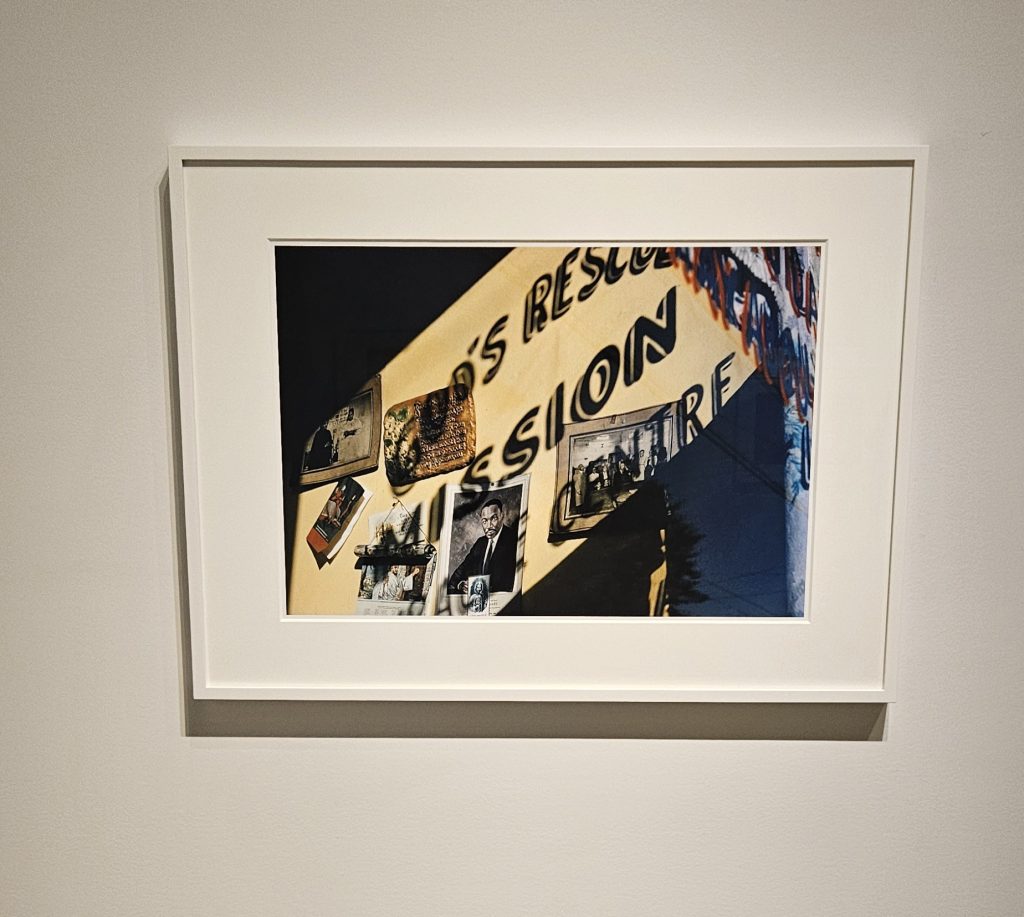
In 1960, Fred took a photo titled “Handshake” and in the image, you see an older man, frowning as a younger man tries to give him a handshake. I observed the details of the older gentleman’s style and the first thing I noticed was a red bow tie and his large hat. The photograph is up for interpretation and I desperately wanted to know why he refused to shake hands. At the same time, it was refreshing to see someone’s refusal being caught on camera. Perhaps the other man was not kind, or they made a bad business deal? The story can go in a million directions and that is what makes this image special. A human moment caught in time during the 1960’s.
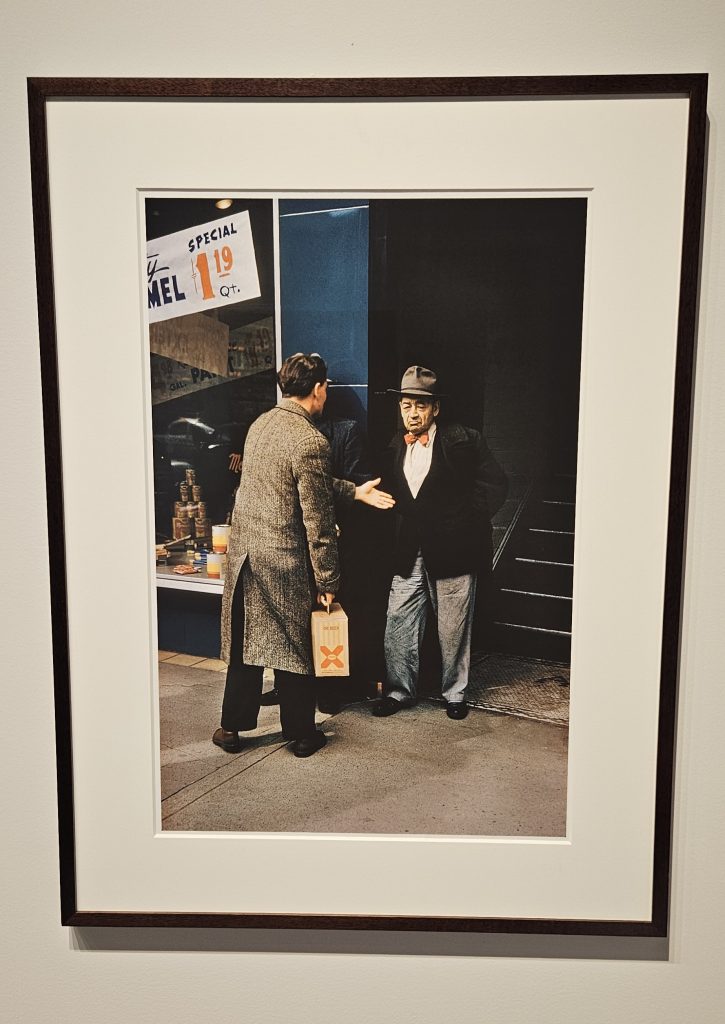
Fred Herzog is great at capturing everyday people. One photo in particular was taken in 1958 on Hastings at Columbia. A sea of well dressed people, scrolling through the colorful streets of Vancouver, left me feeling a little uneasy. At first, I was amazed at seeing individuals from that time walk so freely and then I felt sadness. Those same streets are not safe nor as colorful and lively anymore. Hastings and Columbia now is very different from what it was in 1958 but as I looked closer to Fred’s photograph, I noticed another factor. Almost every single person in the crowd was Caucasian, except for 1 person in the middle who’s out of focus; an Asian man dressed in work attire. In an article published in Global News, during the 1950’s & ‘60s, the Canadian government “unleashed city planning campaigns to wipe Chinatowns off the map”. Racism against Asian Americans in Canada have been present throughout history. Fred’s photo reminded me how integrated our society is today, comparing to the past.
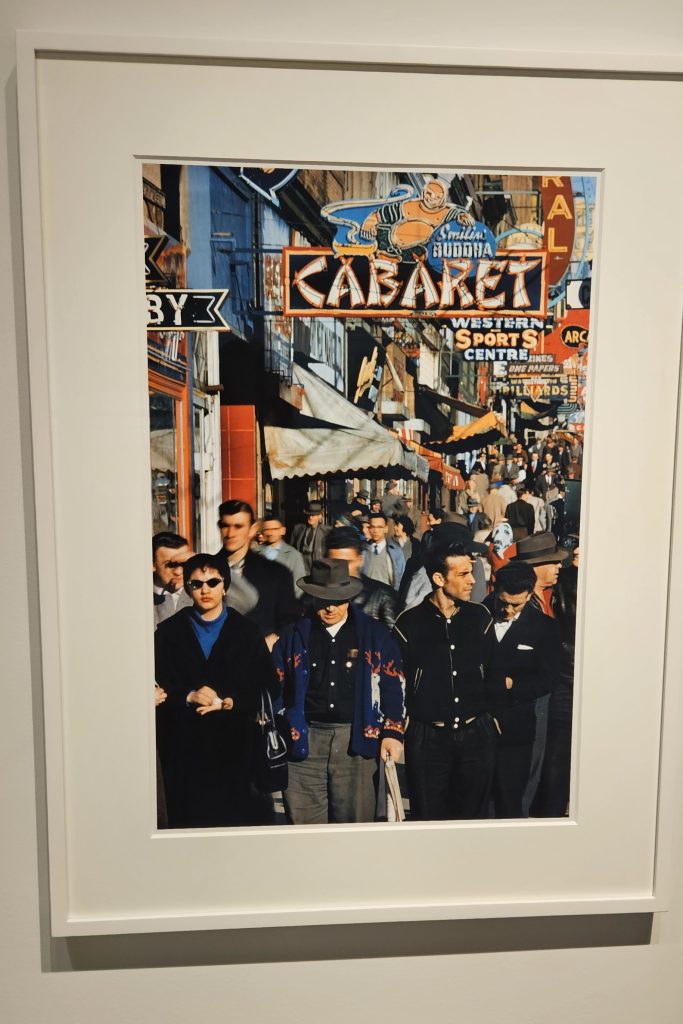
Another image that resonated with me was taken in 1960 on Granville Street at night. It shows a man standing at the corner of an alley, looking out into the vibrant street. My curiosity led me to imagine what it must have been like to be on Granville Street during that era. I also felt appalled by how dangerous that same path has become today. Granville Street, once bustling, now feels like a struggling area that has yet to recover, and I no longer feel safe walking there at night. Fred’s photography opened my eyes to how much the city, and its people have changed.
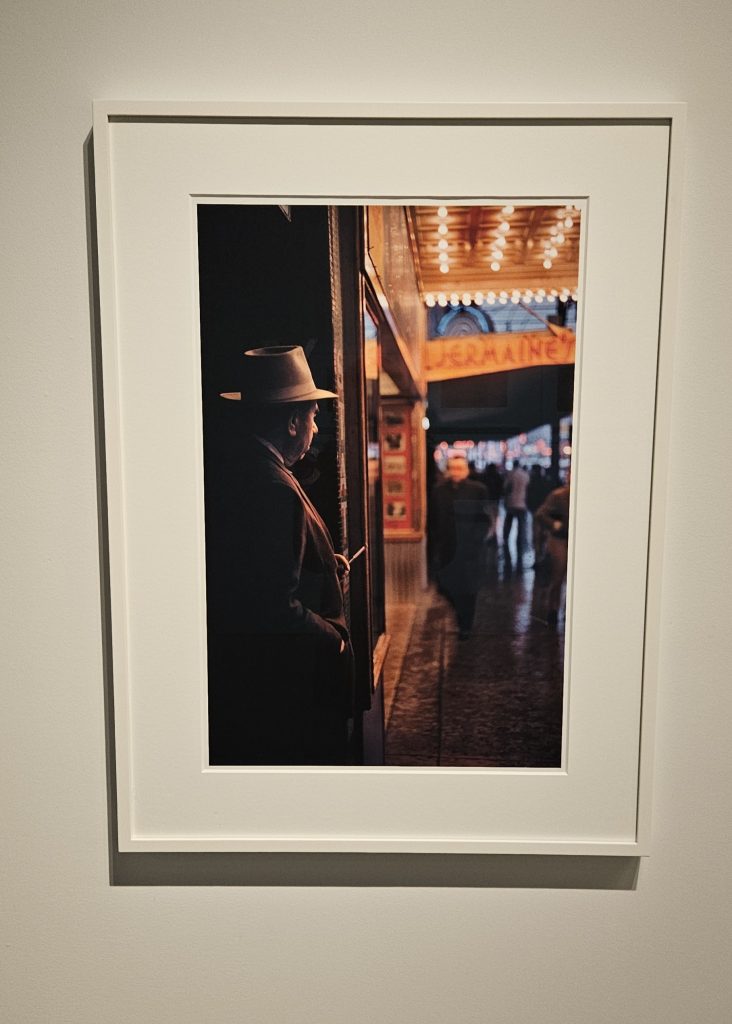
One more photo that stood out was of children playing outside a local grocery store in 1960. The Coca-Cola advertisement caught my attention. It made me realize how much has changed in the way we shop. Small neighborhood grocery stores are nearly extinct, replaced by convenience stores. Yet, capitalism remains as prominent as ever in today’s world.
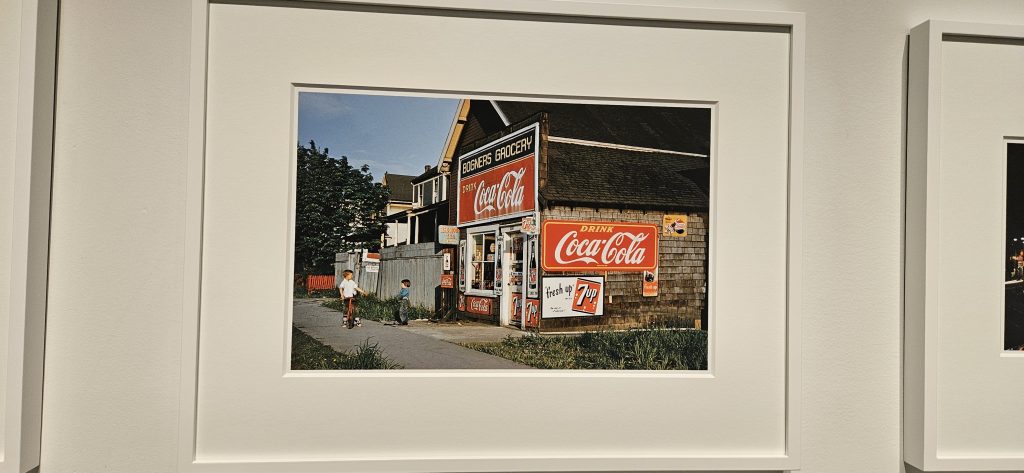
Visiting the Equinox Gallery and seeing Fred’s work silenced the noise in my mind. I became completely absorbed in his photographs, and afterwards, I found myself exploring other artworks, photographs, sculptures, and paintings. Lately, I had been feeling like a hamster stuck in an endless, exhausting wheel. I hadn’t realized how impactful it could be to simply step away from the chaos and engage with art. I visited the gallery with my younger brother, who is also an artist, and for the first time in a long while, I didn’t feel overwhelmed by anxiety. I didn’t think about the weight I’ve been carrying. I also felt a sense of shame. I’m an artist too, I studied at Vancouver Film School, I write passionately, and I love art but I had lost touch with it. How had I not realized how much art exists in Vancouver alone?
Equinox Gallery truly shifted my perspective. I realized that I adore art in all its forms, and I had let it slip away. After my visit, I spoke to my family and decided that my goal for the remainder of the year is to visit more galleries, watch more plays and musicals, attend art events, and see orchestras. The gallery experience was so soothing; I stayed for hours until closing.
Afterwards, I wanted to learn more about Fred Herzog’s life. I couldn’t believe that his work was once rejected by art galleries because it was in color rather than black and white. One of my favorite things about Fred was how he stayed true to his unique style, even in the face of rejection. His perseverance reminded me of my own experiences in the fashion and film industries, where my work wasn’t always recognized. There were times I worked incredibly hard without receiving proper acknowledgment or credit, and I pushed myself to the brink of exhaustion. I sought validation from agencies, but eventually, I realized that my work was valuable on its own. It didn’t matter if others didn’t understand it or appreciate it. I didn’t need to prove myself to anyone.
Fred Herzog’s refusal to compromise on his work reminded me of an incident involving one of my favorite artists, Beyoncé. In 2008, she released her album Sasha Fierce, wanting her cover art and music videos to be in black and white. Her record label discouraged her, claiming that black and white videos wouldn’t sell. She ignored their advice and went ahead with the black and white concept. The videos ended up amassing over a billion views. Beyoncé also left her label, choosing to create her own record company, Parkwood Entertainment.
This made me reflect on how galleries rejected Fred’s work simply because it didn’t follow the conventional norms of black and white photography. His photographs have so much depth and beauty, and they should have been celebrated decades ago. Sometimes, the gatekeepers of the art world are wrong, and it’s essential for artists to follow their own path, even when others don’t understand or approve.
Fred Herzog’s life was inspiring and I’m grateful for having an opportunity to view his work. I don’t think I would have done this on my own, even if I wanted to. I didn’t realize how life changing it was and it reminded me of how much I love seeing the work of other artists. I learned a lot about Fred’s upbringing and the way he captures certain shots. I’m planning to go to Equinox gallery again with my best friend and I’m also going to explore more galleries throughout Vancouver and anytime I travel to a different city.


Leave a Reply